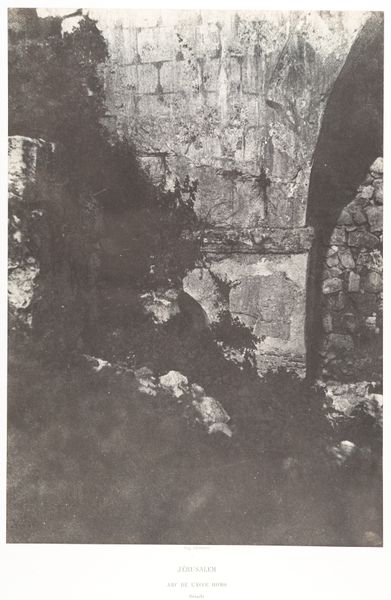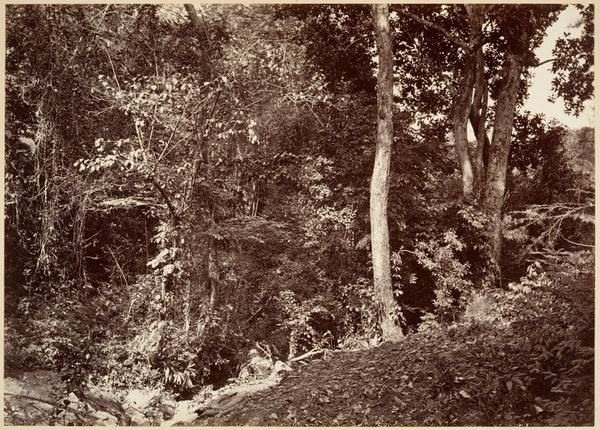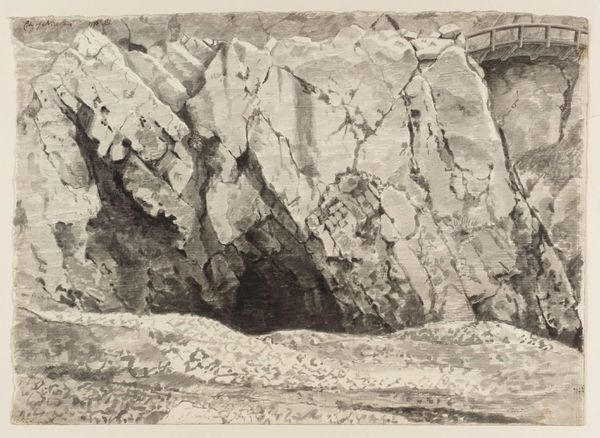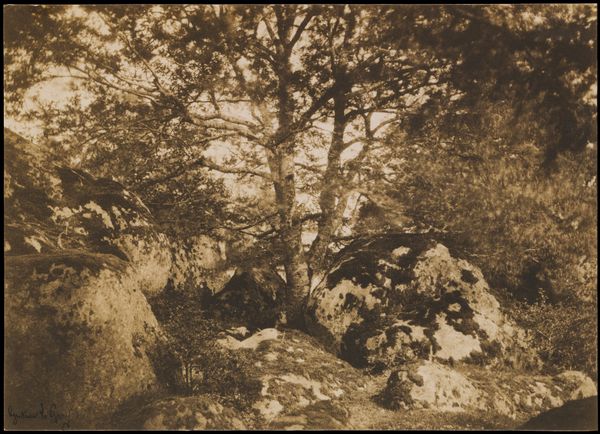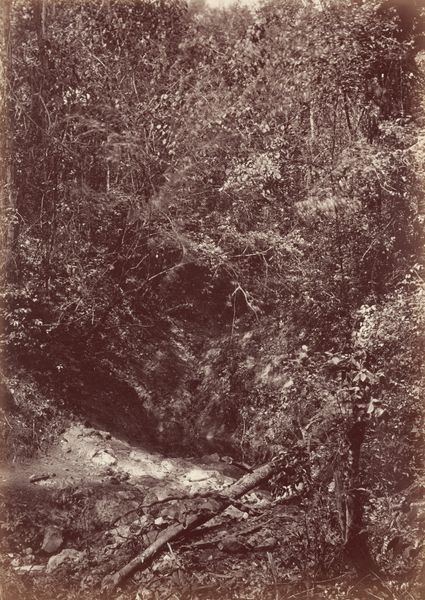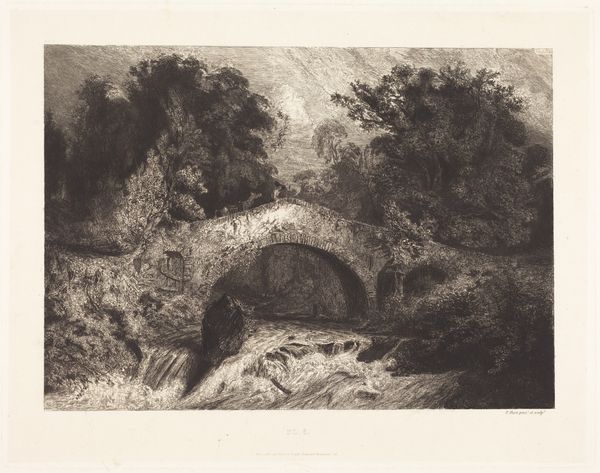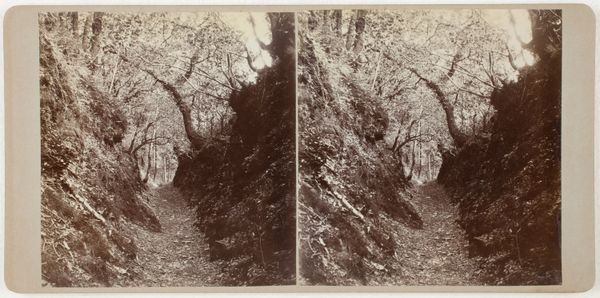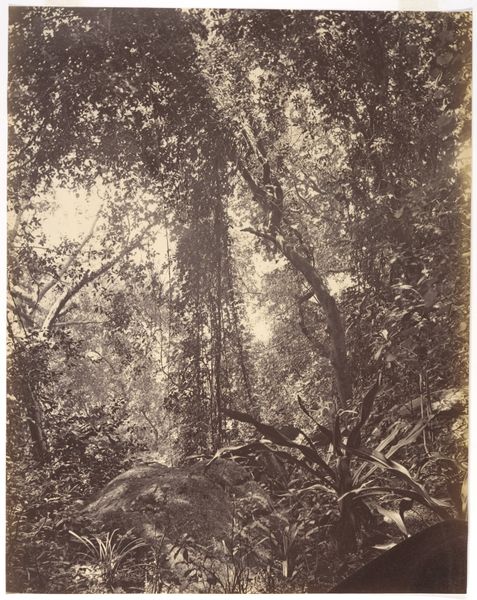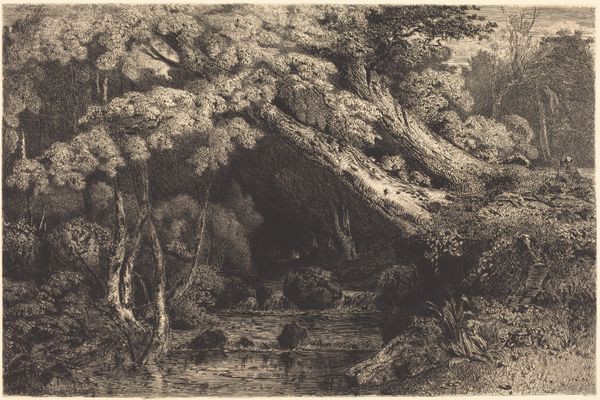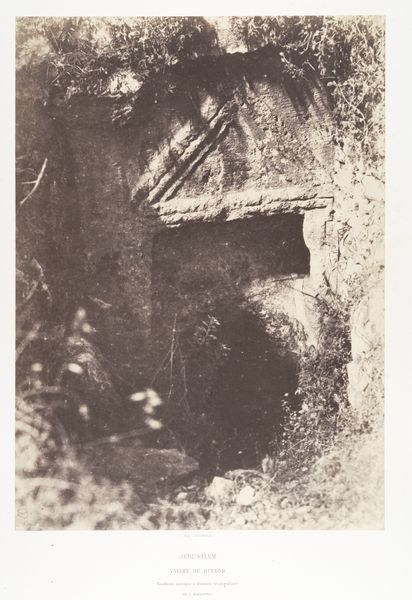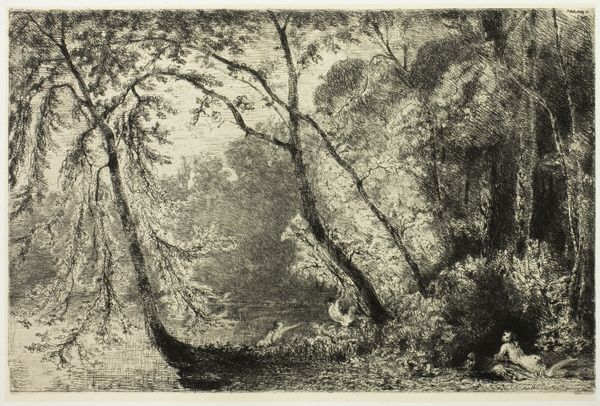![[Path to Fangguangyan Monastery, Fujian] by Lai Fong](/_next/image?url=https%3A%2F%2Fd2w8kbdekdi1gv.cloudfront.net%2FeyJidWNrZXQiOiAiYXJ0ZXJhLWltYWdlcy1idWNrZXQiLCAia2V5IjogImFydHdvcmtzL2FkNzMwNDQwLTYzZjktNDkxOS1hMjlkLTgxMTNjOWI1YWQyZC9hZDczMDQ0MC02M2Y5LTQ5MTktYTI5ZC04MTEzYzliNWFkMmRfZnVsbC5qcGciLCAiZWRpdHMiOiB7InJlc2l6ZSI6IHsid2lkdGgiOiAxOTIwLCAiaGVpZ2h0IjogMTkyMCwgImZpdCI6ICJpbnNpZGUifX19&w=3840&q=75)
photography, albumen-print
#
asian-art
#
landscape
#
photography
#
albumen-print
Dimensions: Image: 7 5/16 × 9 3/8 in. (18.6 × 23.8 cm)
Copyright: Public Domain
Editor: This photograph, "Path to Fangguangyan Monastery, Fujian," was taken in 1869 by Lai Fong. It’s an albumen print. I find it compelling because of the textures – the dense foliage contrasting with the rough rock face and worn stone steps. How do you read this photograph? Curator: From a materialist perspective, this albumen print isn’t just an image; it's the product of specific labor and materials. The albumen itself, derived from egg whites, speaks to the preparation and resources involved. Think about the manual processes inherent in its creation – coating the paper, exposing the negative. It connects us to the photographer’s immediate, social world. Editor: So you’re saying the value is also embedded in the labor behind the art object? Curator: Precisely. It is an historical object; Consider the photographer's place within the political economy of 19th-century China. As well, reflect on its creation in the context of trade and global exchange during that time. How were these materials sourced, and who benefitted from that trade? Where do these prints end up circulating and why? Editor: That's a perspective I hadn’t considered! Focusing on the albumen print’s means of production gives us insight into the historical forces and human work that shapes our visual landscape. Thank you for making me think critically about its materiality and economic background. Curator: Absolutely, always remember art history is also rooted in economic realities.
Comments
No comments
Be the first to comment and join the conversation on the ultimate creative platform.

